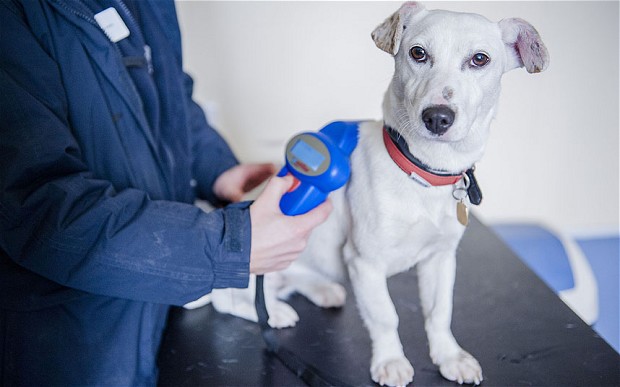We’ve all heard stories like this before. A pet runs away, the family searches for it but to no avail, until 5 years later the pet finally returns home! While these remarkable stories are great to hear about, what is not discussed is the heartbreak the families felt when they thought their pet was gone for good.
Fortunately, there is an easy and reliable way to make sure that your pet finds its way home if they ever become lost: microchipping.
If you don’t know what microchipping is, it can sound scary. But fear not! It’s a completely safe and painless procedure. When you pet is microchipped, a radio transmitter no larger than the size of a grain of rice is implanted under the scruff of their neck. This radio transmitter uses RFID (Radio Frequency Identification) technology to hold and display your pet’s information when scanned.
This sounds simple enough, but we still have many owners asking why they should microchip their pets. In response, we always share these four important reasons:
1. HAVING YOUR PET MICROCHIPPED IS AN INEXPENSIVE, ONE-TIME PURCHASE.
The price varies from vet to vet, but on average, having your pet microchipped will cost you less than $50. When you take into account the money you’d spend searching for your missing pet with flyers, advertisements in the paper and online, $50 is a pretty reasonable deal. It will also save you from unimaginable heartbreak down the road if your pet does go missing.
2. MICROCHIPS ARE PAINLESS TO IMPLANT.
One of the biggest reasons why our clients say they’re not sure about having their pet microchipped is because they don’t want to inflict unnecessary pain. What they don’t realize, however, is that the procedure is completely painless. Since the microchip is only the size of a grain of rice and is implanted in the fleshy scruff, most animals don’t even realize it’s happening.
3. MICROCHIPS ARE THE SAFEST AND MOST RELIABLE FORM OF IDENTIFICATION.
The best thing about microchips is that unlike other forms of identification, you never have to worry about the microchip being lost or destroyed. The average microchip is designed to last 25 years, which is longer than the lifespan of your pet (unless your pet is a world record holder). This means that not only is the information safe, you won’t have to worry about replacing it.
4. IT GIVES YOUR LOST PET THE BEST CHANCE OF BEING RETURNED HOME SAFELY.
Unfortunately, there are a large number of stray pets that are picked up, but have either lost their collars or their ID tags are too damaged to read. Since it is unlikely that a microchip would be lost or too damaged to read, the chance of finding your lost companion is dramatically improved.
Now that you know a little bit more about microchips, we hope you seriously consider this form of identification for you pet. Whether you’re adopting a new puppy or kitten or have an older dog or cat already at home, next time you’re in the clinic ask us about your options for microchipping. Our knowledgeable staff is here to answer any of your questions.

